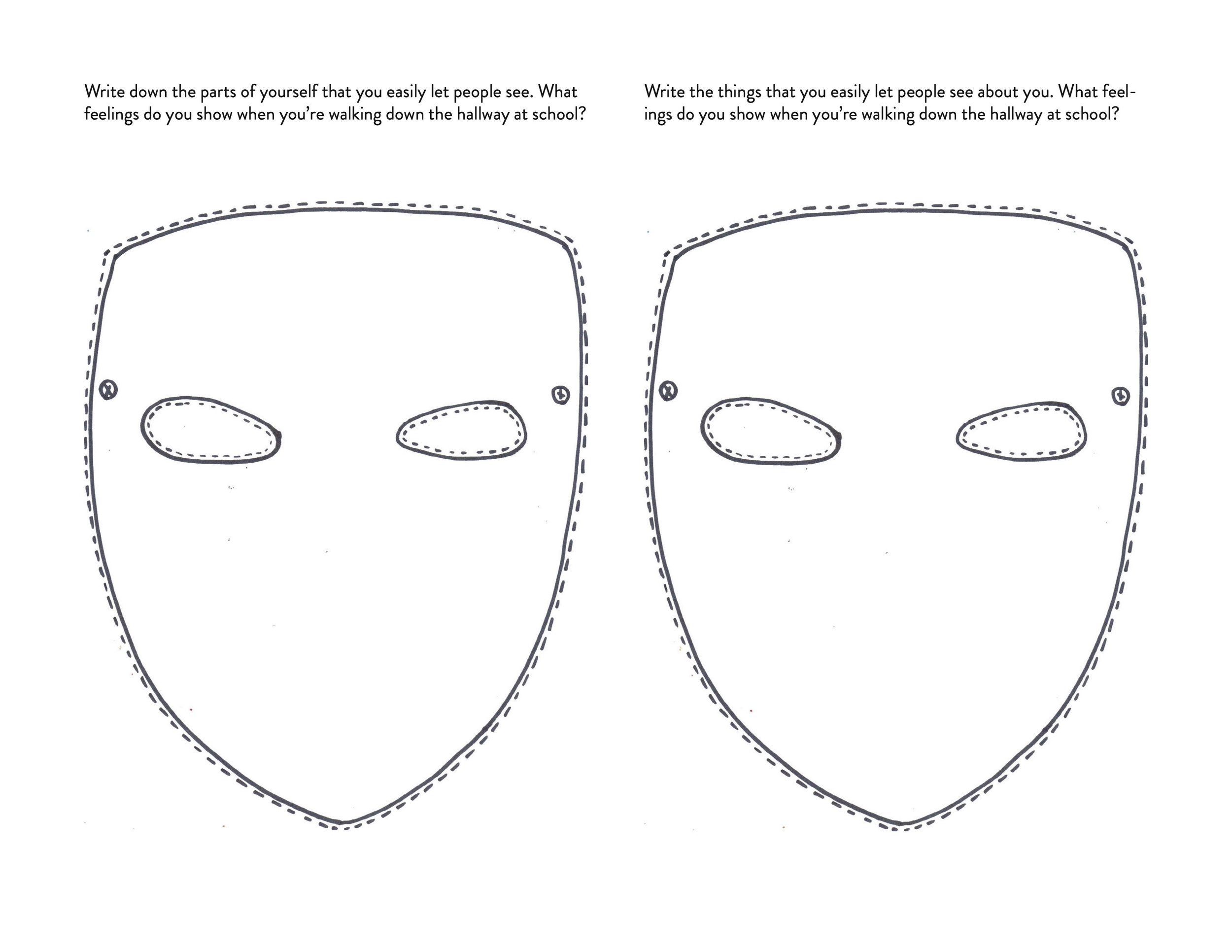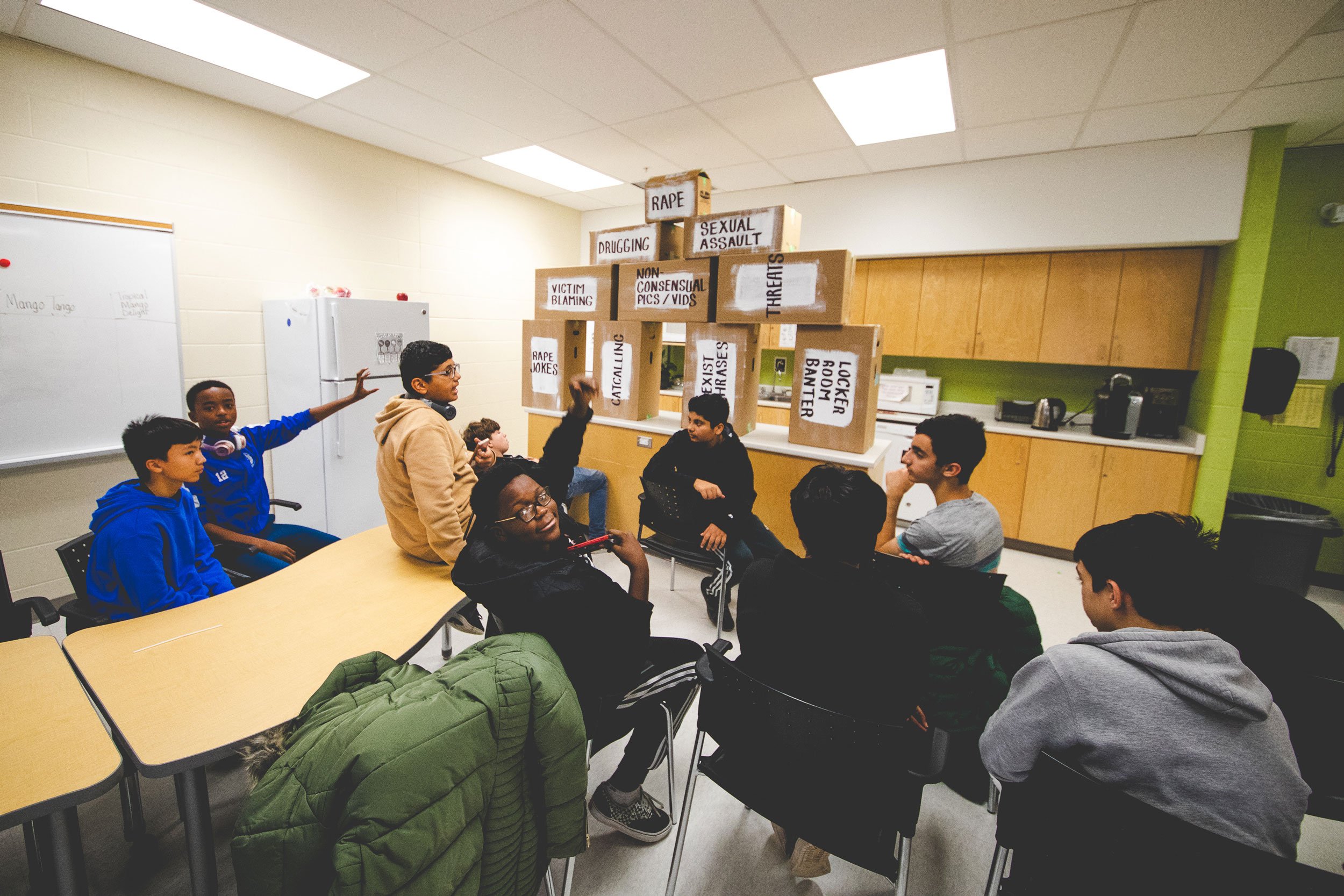How to Get Boys to Show Up to a Program on Masculinity
This is the first article in a two-part series about how to put our free 100+ page program guide, the Next Gen Manual, into action. This post covers how to engage boys themselves—how to get them to show up, stick around, and dig deep.
In 2018, I ran a Next Gen Men after-school program that had only four participants show up to the first session. The following week, we had fourteen. While all the others were having the run of the gym at the end of the session, one of the boys sat next to me.
“Do you want to know why there are fourteen of us now?” he asked.
“Sure,” I answered.
“When you first told us all about the program, you were wearing a pink watch. So Andre and Jesus started telling everyone that if they joined Next Gen Men, it would turn them gay.”
“But this week our teacher found out,” he continued, “and she made everyone stop what they were doing and we had a whole class discussion about homophobia and bullying. And then other people felt confident enough to join.”
Read more: I unpack that story further in past Learnings & Unlearnings post, Being Anti-Homophobic.
School programs on positive masculinity offer offer an opportunity to explore alternatives to the ‘toughen up’ messages of manhood. There is no shortage of stories about boys programs’ impact, and very clear reasons why schools should commit to combating toxic masculinity.
But in some ways, deciding to do the program is the easy part.
The hard part may be getting a group of boys and young men to show up in the first place. At Next Gen Men, we’ve been engaging boys and young men in gender equality for a long time, and we’ve gained some insights along the way.
Use a boy-friendly hook to get them in the door.
Our programs are typically voluntary.
This is called as a universal intervention—offered to all masculine-identifying youth, who choose themselves whether or not to participate. We do it that way because of the value of working upstream to engage all boys and men to prevent gender-based violence.
Teenage boys, however, are not always the easiest to reach, particularly at school and especially in the unfamiliar context of a gender-transformative program.
This means that you need to clearly be able to answer boys’ fundamental question: what’s in it for me?
Those who are considering participating need to be able to recognize—and sometimes, justify to their friends—an easy reason to get involved.
Can they miss a bit of class time? Do they get an opportunity to play in the gym? Are there snacks available? Volunteer hours? A familiar, youth-centred hook will help masculine-identifying youth take their first step in the door.
Build a safe, inclusive space for boys to be themselves.
During Next Gen Men’s years of directly facilitating after-school programs, we saw again and again that boys would come for the hook—because they got a free trip to a sports game, because they were bored after school, or the facilitator was wearing sweet Nike kicks—but they would stay because we were offering them something entirely unique.
A program on positive masculinity offers youth an opportunity to reflect on their experiences and beliefs, participate in meaningful discussions, and deepen their relationships with their peers.
That’s rarely happening elsewhere in their lives.
It also rarely happens by accident. We know that boys want to have meaningful conversations about their lives and stay connected to their friends—but for those things to happen, facilitators need to carefully co-create a new space with them.
In Building a Trauma-informed Restorative School, author and mediator Joe Brummer advises using a ‘respect agreement’ to form a positive learning environment. “We don’t want our students to create a document of ‘rules’ they blindly follow out of obedience,” Brummer explains. “We are creating an agreement of how we want to ‘be’ together in community.”
“If kids are going to be respectful, they must feel respected. And respecting them means allowing them to make decisions about the things that affect them and, most of all, believing in their potential.”
A safe and inclusive space means that young adolescents can practice being vulnerable with each other, and take off their masks to share their authentic selves. For boys, that’s worth staying for.
And that’s what this is all about.
Get boys talking about challenging topics by starting in familiar territory.
In 2018, the NBA Finals revolved around the Cleveland Cavaliers and the Golden State Warriors. In the final seconds of the first game, JR Smith dribbled the ball out of the key instead of taking a final shot and the Cleveland Cavaliers lost in overtime despite a 51-point performance from LeBron James.
LeBron James was so upset with his teammate that he punched a whiteboard. He ended up hiding his injury for the entire NBA Finals, playing with a broken hand unbeknownst to anyone. The Cavaliers ultimately ended up getting swept by the Warriors.
In 2018, every teenage boy knew this story.
So the question we had for them was: if you’re a star athlete like LeBron James, why would you hide that injury?
For years after these NBA Finals, boys would leap to answer that question: because you don’t want to be targeted by others, because you’re embarrassed, because you don’t want to let others down.
And sometimes without them even realizing it, we would start talking about mental health and what makes it hard to admit when we’re struggling or ask for help as boys and young men.
That’s the kind of refining that has gone into the development of our Next Gen Manual program guide and Talking Tools card decks—because the best way to get masculine-identifying youth alongside you in your programs or workshops is by meeting them where they are.
Build your awareness of familiar topics to them, the interests and experiences of the youth in your program, and use them to create familiar launching points for deeper discussion points.
Boys will go further when they’re allowed to start on familiar ground.
Read more: Past Learnings & Unlearnings post, A Gender-Neutral Approach to Toxic Masculinity Won’t Work.
Use interactive activities instead of sitting still.
The first time I taught a group of boys about the pyramid of violence, I drew it on a piece of chart paper. I remember taking it off the wall after the session came to a close and thinking to myself: wait a minute…we could have built this.
There is nothing wrong with sitting and talking. We’ve run programs where boys voted to keep talking even though we were cutting into their recreation time; we know of schools that have organically gathered a group of boys on a weekly basis just through leveraging the Cards For Masculinity discussion prompt deck.
But there is value to a mindset of movement.
Active explorations, team-building challenges, competitions, roleplays and performances are all valuable forms of experiential learning. In their book Teaching Boys, Reaching Boys, researchers Richard Hawley and Michael Reichert describe the value of movement: “It is far from startling to report that boys find it refreshing and occasionally even thrilling to be released from the close confinement of classroom business and be allowed to engage in vigorous physical activity.”
“Many of the boys seemed to recognize, as their teachers did, that such release can serve the intended learning objectives.”
As with most things, the best practice is balance. I designed an highly active adaptation of the Man Box workshop with sixth graders in June—what do sixth graders want to be doing in June?—to burn the energy, get the buy-in, and then get down to talking.
Choose program facilitators with a commitment to boys’ wellbeing.
Here’s the thing. All of these meaningful and impactful experiences are only made possible by educators—school counsellors, teachers, social workers—who step up, lean in, and sit with their students as they explore masculinity on a deeper level.
Read more: Our wrap-up from the Future of Masculinity Summit in 2022, To the Educators Building the Future of Masculinity.
You don’t need to be a man to facilitate a program on positive masculinity. Yes, having a positive male role model is impactful, but in some contexts, having different-gender facilitators is actually preferred.
Young men value the personal qualities and commitment of adults above their gender or other social identities.
As Richard Hawley and Michael Reichert explain, boys sustain their engagement in learning when they feel held in a positive, trusting relationship to their teacher.
That, more than anything, is a crucial piece to the puzzle of getting youth involved.
“Deepening their capacity to listen, extending themselves in care, expressing delight or interest, exhibiting patience when their lessons are thwarted by a recalcitrant or otherwise struggling student: these are the stuff of presence.”
There is no magic bullet that will propel boys’ engagement in a school program on masculinity. There are, however, key choices, adaptations and mindsets that will more effectively give youth an opportunity to try it out and stick around.
If you haven’t yet, download our free program guide, the lovingly named Next Gen Manual, to get started.







